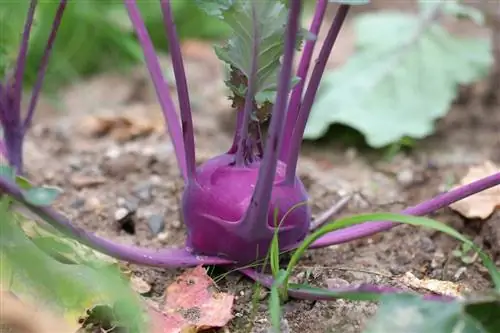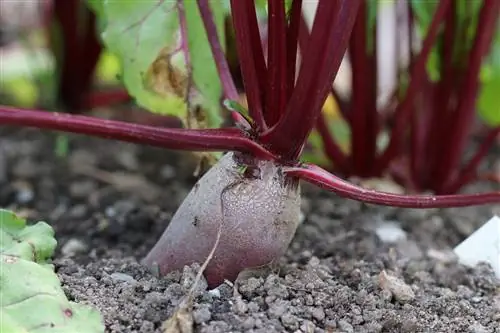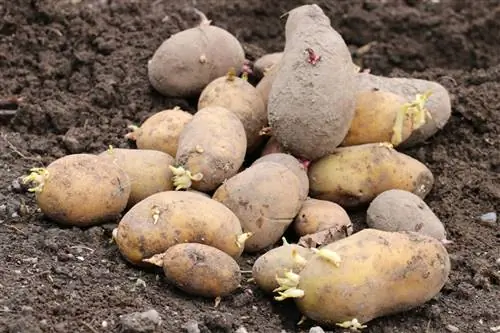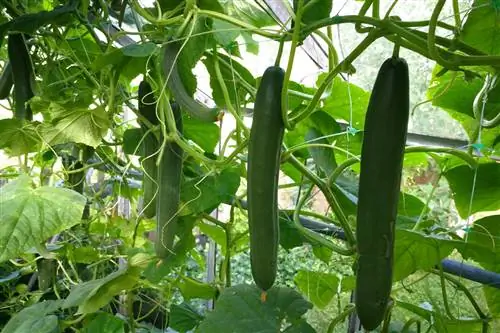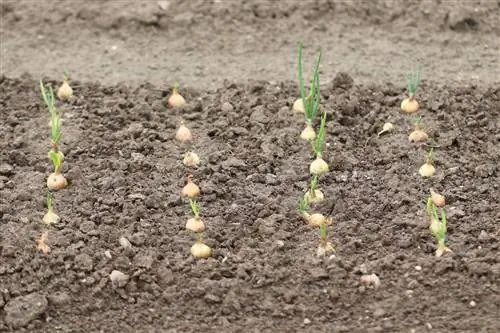- Author admin [email protected].
- Public 2023-12-17 03:39.
- Last modified 2025-01-24 12:45.
The search for a good neighbor for the kohlrabi (Brassica oleracea var. gongylodes L.) is not laborious, because there is no shortage of suitable candidates. Other factors may decide which vegetable it will ultimately be.
Good neighbors for the kohlrabi
The kohlrabi, botanically Brassica oleracea var. gongylodes, is a so-called medium-feeder that requires some nutrients, but not an excess of them. This characteristic makes it possible for him to stand next to his own kind as well as some weak and heavy eaters.
He feels particularly comfortable in the garden bed with these plants:
- Beans
- Peas
- Cucumbers
- Potatoes
- Leek
- Radish
- Beetroot
- Salad
- Celery
- Spinach
- Tomatoes
Note:
If you have often had to struggle with cabbage white caterpillars when growing kohlrabi, then you should definitely try a suitable mixed culture. It is a proven remedy against the spread of this pest.
Small space requirement and fast growth
When deciding which plant neighbor is ideal for the kohlrabi, the typical growth of the individual plant varieties should also be taken into account. Kohlrabi is a fast-growing tuber that can be cultivated early in the year. Young plants are usually grown indoors and planted out from the end of March. Depending on the variety, the first tubers are ready to harvest after eight to twelve weeks, i.e. around June.

If a tuber is actually harvested, the entire plant disappears from the bed. This completely frees up the space for your neighbors. That's why kohlrabi, for example, is an ideal companion for tomatoes and potatoes in an early phase of their growth because it is harvested before the two nightshade plants develop extensively.
Tip:
Different types of kohlrabi are available on the market. If you only have a small amount of space in your garden that you want to make the most of, then choose one of the low-leaf varieties.
Changing plant neighbors throughout the year
So that the harvest season lasts longer or is spread evenly over the garden season, kohlrabi is reseeded at regular intervals. Only young kohlrabi taste tender, while older specimens become increasingly woody. This cultivation process makes a flexible mixed culture possible by selecting the plant neighbor that best suits each planting time. Kohlrabi can be placed next to lettuce early in the year, while late in the year it can be placed in a bed with leeks, as they initially take up little space or only tend to grow upwards.
Tip:
Most gardeners focus on the thick tuber of this vegetable, while the leafy greens end up in the compost or are used as rabbit food. Few people know that the young leaves are edible and aromatic and can be prepared like spinach.
Neutral Neighbors
In a colorfully planted garden you can usually find a good plant neighbor for the kohlrabi. And if that is not possible, then plants are available that do not promote its growth, but do not harm it or cause any damage themselves.
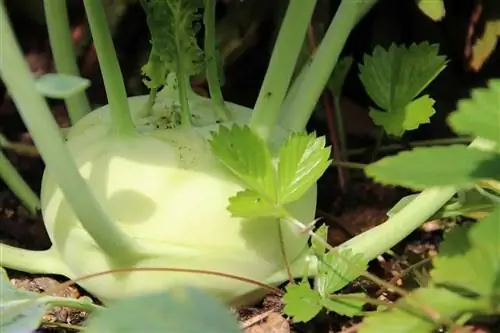
These are the neutral companions:
- Strawberries
- Fennel
- garlic
- Carrots
- Radish
- Zucchini
Kohlrabi as a gap filler
Kohlrabi is a wonderful plant that can be used to take advantage of smaller gaps in the bed. Whenever a space becomes available and is not needed for anything else, you can sow a few seeds or plant a young kohlrabi. Which neighborhood the kohlrabi will grow in is secondary. The only thing you should definitely avoid is the immediate proximity to other types of cabbage and onions.
Tip:
Despite good neighbors, every plant needs enough space to develop. Therefore, maintain a planting distance of around 15 cm. Giant kohlrabi should have 20 to 25 cm of free space all around.

